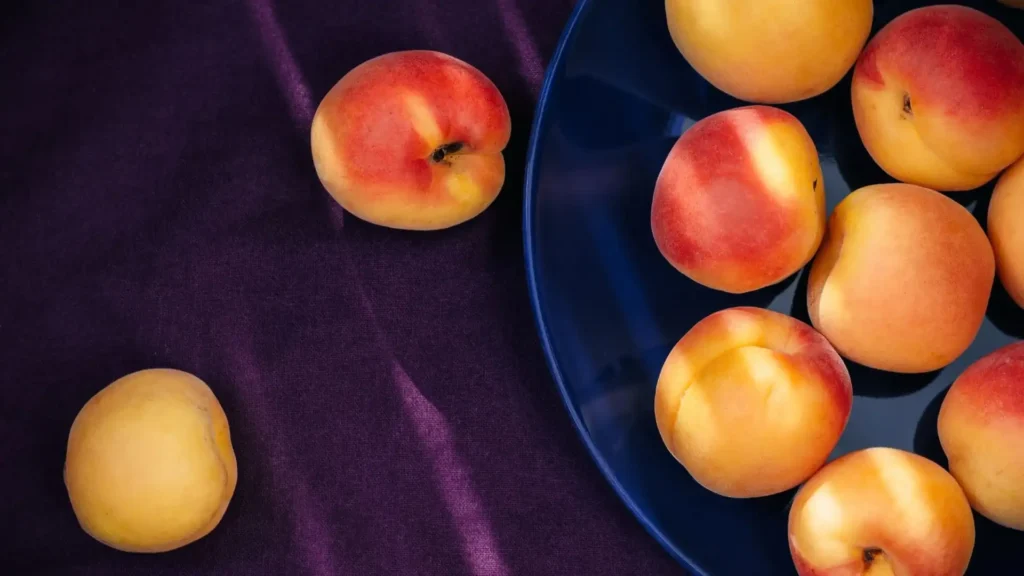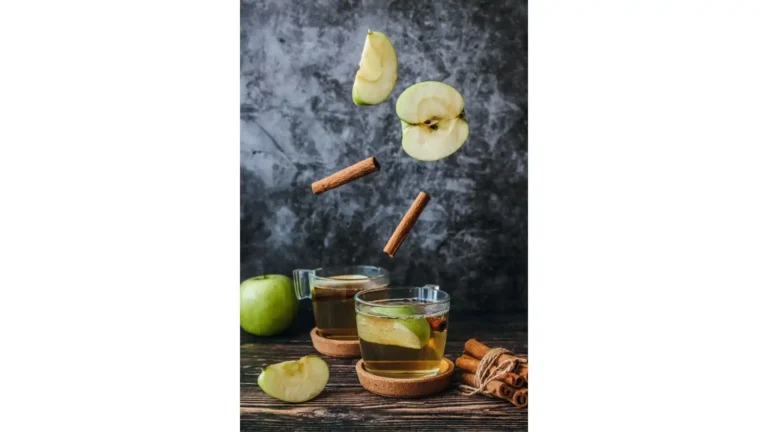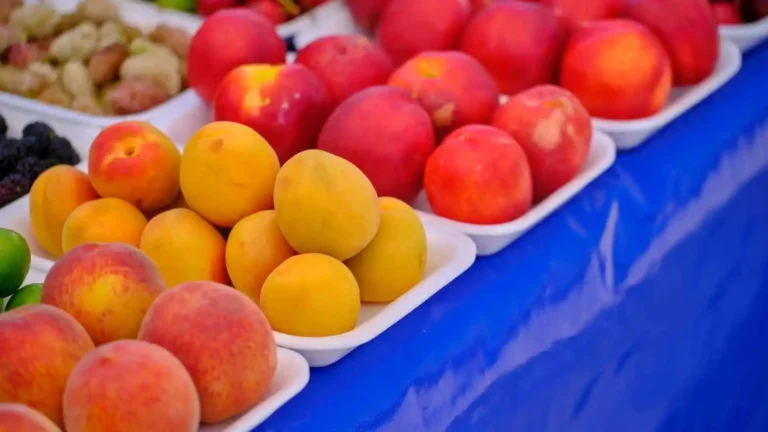Eating an apricot involves more than just enjoying its sweet, tangy flavor. Originating from China, this popular fruit has made its way across the globe, cherished for its delightful taste and numerous health benefits.
Apricots are packed with vitamins, antioxidants, and fiber, making them a nutritious addition to any diet. Knowing the proper way to eat an apricot ensures you get the most out of its nutritional value while also appreciating its natural goodness. Whether fresh, dried or as part of a dish, understanding how to consume apricots can enhance your eating experience and contribute to a healthier lifestyle.

Selecting the Perfect Apricot
Selecting the perfect apricot starts with eyeing the fruit’s vibrant hues. Look for apricots with a deep, golden orange color; this indicates ripeness and a promise of sweetness. The skin should be smooth and free from bruises or blemishes. When it comes to texture, a ripe apricot will yield slightly to gentle pressure, signaling it’s ready to eat. However, if it feels too soft, it may be overripe.
The smell is another giveaway; a ripe apricot emits a sweet, fragrant aroma. At the store or market, opt for apricots that are firm yet slightly soft, with a rich color and inviting smell. These characteristics are the markers of an apricot that will offer the best flavor and texture.
Preparing Your Apricot
Preparing your apricot begins with a thorough rinse under cold water to remove any dust, pesticides, or residues from the surface. Gently pat them dry with a clean towel, ensuring they are clean and ready for consumption.
To properly cut an apricot, you’ll need a sharp knife. First, hold the apricot securely on a cutting board. Slice the fruit along its natural seam all the way around, gently twisting the halves in opposite directions to separate them. This method reveals the pit.
Once the apricot is halved, the pit should be visible and easy to remove. Use the tip of your knife or your fingers to gently lift the pit out of one half. If the apricot is ripe, the pit will come out with minimal effort.
Peeling the skin of an apricot is optional and based on personal preference. For those who prefer their apricots peeled, you can blanch the fruit to make this process easier. Make a small X at the bottom of each apricot with a knife, plunge them into boiling water for about 30 seconds, and then transfer them into ice water. The drastic temperature change loosens the skin, making it easy to peel away.
Whether you choose to eat your apricot with the skin on or peeled, these steps help you enjoy your fruit most deliciously and safely.
Eating Apricots
Eating apricots can be a delightful experience, whether they are consumed raw, dried, or cooked. Fresh apricots are juicy and flavorful, perfect for eating out of hand. Dried apricots offer a concentrated taste and are a great snack for on-the-go energy. Cooked apricots reveal a deeper sweetness and can be used in various culinary creations.
Incorporating apricots into your diet can add a burst of flavor and nutrition. Toss sliced fresh or dried apricots into salads for a sweet contrast to leafy greens. Mix them into yogurt or oatmeal for a delightful breakfast, enhancing the meal’s taste and nutritional value. Apricots also make for a delicious addition to desserts, whether baked into pies, or tarts, or used as a topping for ice cream and cakes.
For those who enjoy homemade treats, making apricot jam or compote is a wonderful way to preserve the fruit’s flavor. These can be used to spread on toast, swirl into yogurts, or as a glaze for meats, offering a lovely sweet-tangy flavor that complements a variety of dishes.
Exploring the versatility of apricots in cooking and baking not only diversifies your diet but also introduces new ways to enjoy this nutritious fruit.
Cooking with Apricots
Cooking with apricots opens up a world of culinary possibilities, offering a sharp and zesty flavor that enhances a variety of dishes. Here are two simple and delicious apricot recipes to get you started.
Apricot smoothie recipe
For an apricot smoothie, you’ll need ripe apricots, Greek yogurt, a banana for sweetness and thickness, a touch of honey, and some ice cubes. Start by halving and pitting the apricots. Next, blend the apricots, banana, Greek yogurt, honey to taste, and ice cubes until smooth. This smoothie combines the creamy texture of yogurt with the fresh, vibrant flavor of apricots, making it a perfect, refreshing drink for any time of day.
Baked apricots with honey and almonds
Baked apricots with honey and almonds is a simple dessert that brings out the fruit’s natural sweetness. Firstly, halve and pit your apricots, then place them in a baking dish cut-side up. Next, drizzle with honey and sprinkle with sliced almonds, adding a dash of cinnamon if desired. Thirdly, bake in a preheated oven at 375°F (190°C) for about 20-25 minutes, or until the apricots are tender and the almonds are toasted. Serve warm, perhaps with a scoop of vanilla ice cream or a dollop of whipped cream for an extra indulgent touch.
These recipes showcase the versatility of apricots in both sweet and savory dishes, proving that cooking with apricots elevates your meals with ease and sophistication.

Health Benefits of Apricots
The health benefits of apricots are vast, stemming from their rich nutritional profile. Apricots are packed with vitamins A and C, essential for maintaining good vision, skin health, and immune function. They also offer a good source of potassium, which is crucial for heart health and muscle function and are rich in fiber, aiding in digestive health.
Incorporating apricots into a healthy diet can have multiple benefits. The high fiber content helps promote regular bowel movements and can contribute to a feeling of fullness, aiding in weight management. The antioxidants found in apricots, particularly beta-carotene and vitamins A and C, protect the body against oxidative stress and inflammation, which can lead to chronic diseases.
For eye health, the vitamin A and beta-carotene in apricots are vital. They help protect the eyes from damage caused by light and reduce the risk of age-related eye diseases. Apricots’ vitamin C and E content, alongside their hydration factor, play a significant role in maintaining skin health by promoting collagen production and offering protection against UV damage.
Lastly, the dietary fiber in apricots supports the digestive system, promoting gut health and preventing constipation. This fiber, combined with the fruit’s water content, can help maintain a healthy digestive tract and promote overall health.
Therefore, by offering a combination of essential nutrients, apricots not only contribute to a balanced diet but also support various aspects of health. Enhancing vision and skin, aiding digestion, and preventing chronic diseases are some of the most important benefits of apricots.
Storing Apricots
Storing apricots properly can significantly extend their shelf life, allowing you to enjoy their sweetness and nutritional benefits for longer. For fresh apricots, keep them at room temperature until they ripen, which is indicated by a slight softness of touch and a rich, fruity aroma. After they become ripe, move them to the fridge to reduce the speed of the ripening process. Place them in a plastic bag or container to avoid moisture loss, and they should last for about 3 to 5 days.
To freeze apricots for long-term use, start by washing and drying them thoroughly. Cut the fruit in half to remove the pit, and if you prefer, slice them into smaller pieces. To prevent browning, you can toss the slices with a little lemon juice. Spread the apricot halves or slices on a baking sheet lined with parchment paper, ensuring they’re not touching, and freeze them for a few hours until solid. Once frozen, transfer the apricots to airtight bags or containers. Label them with the date, and they can be stored in the freezer for up to a year.
Freezing not only preserves apricots for an extended period but also retains their nutritional value, making it a convenient option to enjoy apricots anytime. Whether you’re storing them in the refrigerator for immediate use or freezing them for future delights, these methods ensure you get the most out of your apricots.
FAQs on How to Eat an Apricot?
Can you eat the skin of an apricot?
Yes, the skin of an apricot is edible and contains a good amount of fiber and nutrients. It’s soft and doesn’t need to be peeled off before eating, though washing the fruit thoroughly is recommended to remove any residues.
How can you tell if an apricot is bad?
An apricot that has gone bad will have a mushy texture, dark spots, and a sour or fermented smell. If the fruit feels too soft or shows signs of mold, it should be discarded.
Are dried apricots as healthy as fresh ones?
Dried apricots are a healthy option, offering a concentrated source of nutrients and fiber. However, they have a higher sugar content per serving compared to fresh apricots. It’s also important to choose dried apricots that haven’t been treated with sulfites, which are used to preserve color but may cause allergic reactions in some people. Despite the differences, both fresh and dried apricots are nutritious and can be included in a balanced diet.








